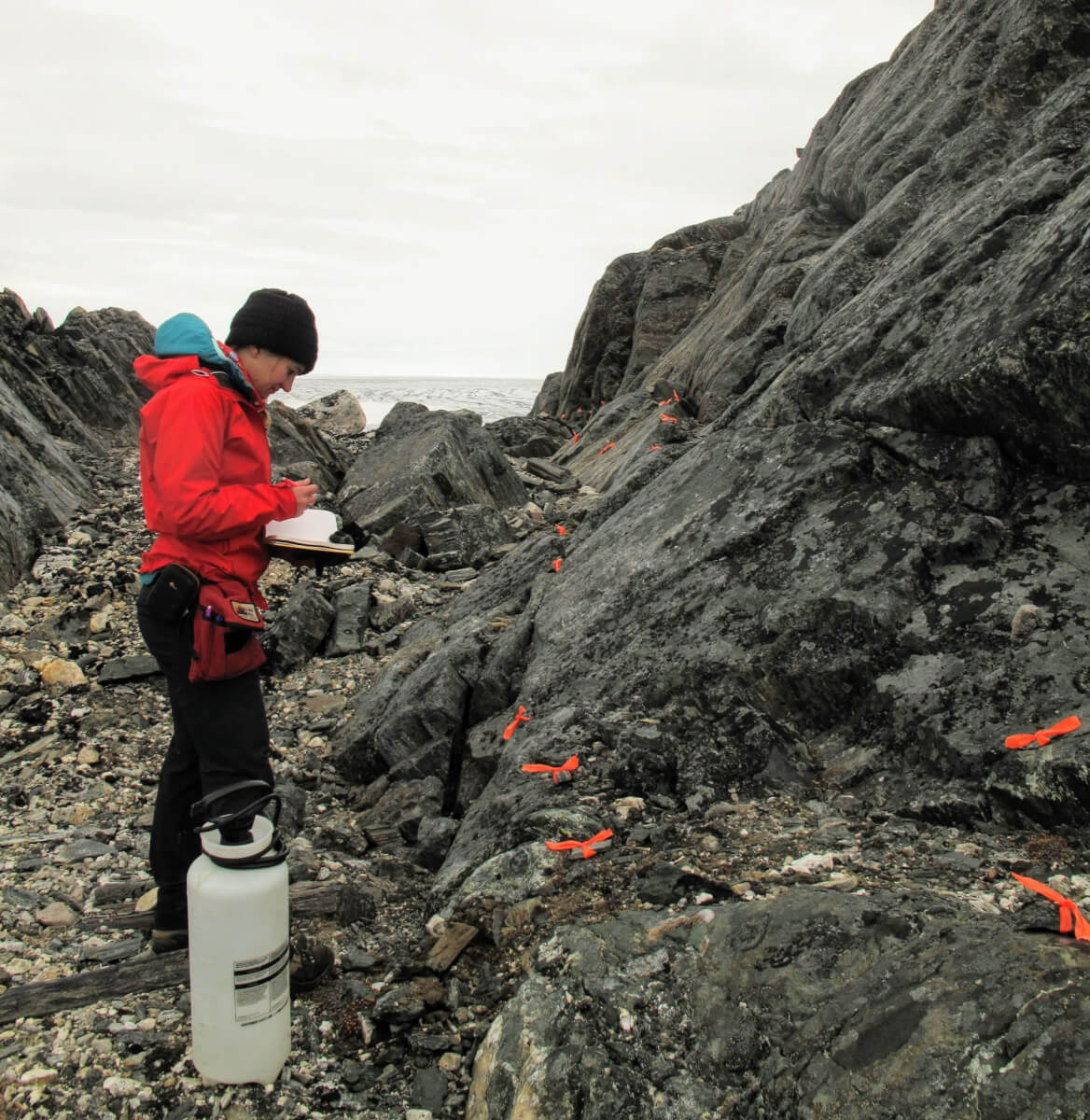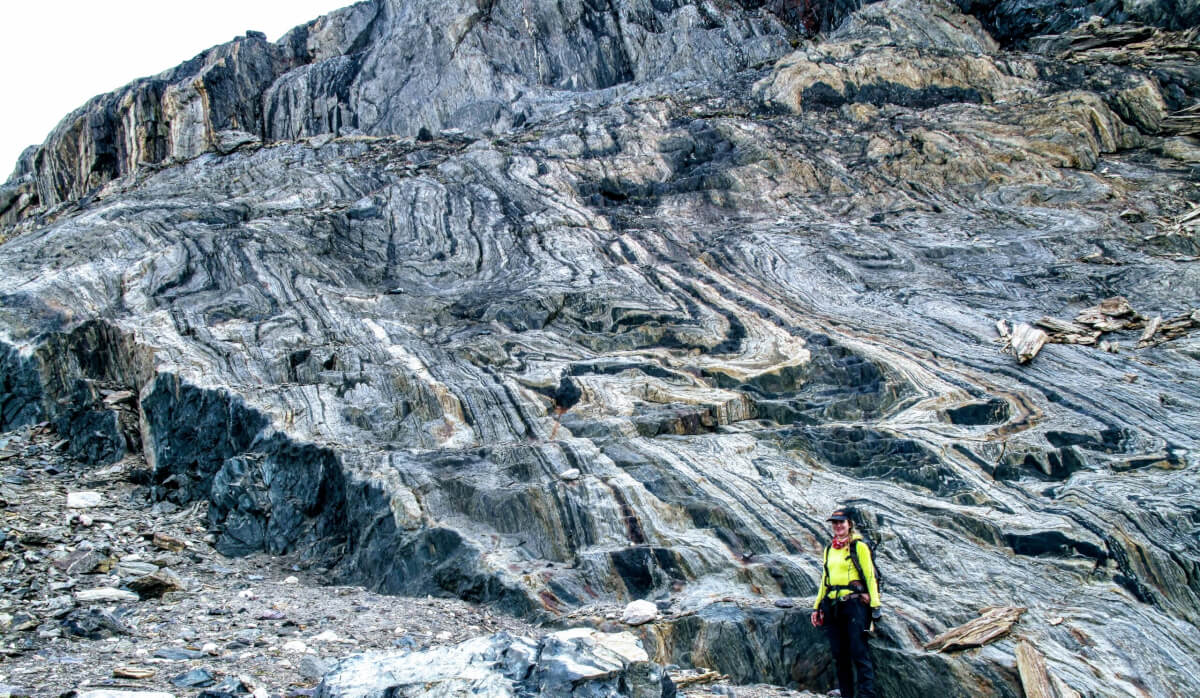OXFORD, United Kingdom — In a groundbreaking discovery, scientists have unearthed the oldest known record of Earth’s magnetic field, dating back a staggering 3.7 billion years. This remarkable finding, published in the Journal of Geophysical Research, not only pushes back the age of our planet’s magnetic shield but also suggests that it was remarkably similar in strength to the field we experience today.
Earth’s magnetic field is an invisible but crucial barrier, protecting our planet and its inhabitants from harmful cosmic radiation and charged particles from the Sun, known as the solar wind. Without this protective shield, life as we know it would not be possible. However, the question of when this vital field first emerged has long puzzled scientists.
Now, a team of researchers led by the University of Oxford and MIT has shed light on this enduring mystery. By examining ancient rocks from the Isua Supracrustal Belt in Greenland, they’ve recovered a magnetic record that dates back 3.7 billion years, making it the oldest well-preserved evidence of Earth’s magnetic field.
The rocks in question are banded iron formations, or BIFs, characterized by alternating light and dark layers. The dark bands are enriched in magnetite, a mineral that acts like a tiny compass needle, aligning itself with the ambient magnetic field when the rock formed.
“Iron particles effectively act as tiny magnets that can record both magnetic field strength and direction when the process of crystallization locks them in place,” explains lead researcher Professor Claire Nichols from the Department of Earth Sciences at the University of Oxford, in a media release.

However, deciphering the magnetic signals in such ancient rocks is no easy task. Over billions of years, geological processes can heat, squeeze, and chemically alter the rocks, potentially erasing or overwriting their original magnetic record. It’s akin to trying to read a book that’s been repeatedly erased and rewritten.
To overcome this challenge, the researchers employed a multi-faceted approach, combining detailed field observations of the rocks’ relationships with lab analyses of their magnetic minerals and directions. A key piece of evidence was the discovery of igneous rocks, known as the Ameralik dykes, that intruded into the BIFs around 3.5 billion years ago. The heat from these intrusions would have erased any pre-existing magnetization in the surrounding BIFs. Intriguingly, the researchers found that the magnetic directions in the BIFs away from the dykes differed from those close to the dykes, suggesting that the more distant BIFs retain an older magnetic signal that predates the dyke intrusion.
The team also conducted a fold test – a standard method in paleomagnetism. The Isua rocks have been deformed and folded by ancient tectonic forces. If the rocks were magnetized before folding, the magnetic directions should cluster better when the fold is mathematically “undone.” This is precisely what the researchers observed, indicating that the BIF magnetization is older than the folding event, which likely occurred between 3.5 and 3.7 billion years ago.
The strength of the ancient magnetic field was another surprising revelation. The researchers found that 3.7 billion years ago, the field strength was at least 15 microtesla, about half of its strength today.
“Extracting reliable records from rocks this old is extremely challenging, and it was really exciting to see primary magnetic signals begin to emerge when we analysed these samples in the lab,” Prof. Nichols says. “This is a really important step forward as we try and determine the role of the ancient magnetic field when life on Earth was first emerging.”
While the field strength appears to have remained relatively constant, the solar wind is known to have been significantly stronger in the distant past. This suggests that Earth’s magnetic protection against the solar wind has increased over time, which may have allowed life to venture onto the continents and leave the sanctuary of the oceans.
The discovery also raises intriguing questions about how Earth’s magnetic field was generated 3.7 billion years ago. Today, the field is generated by the churning of molten iron in Earth’s outer core, driven by the solidification of the inner core. However, during Earth’s early formation, the solid inner core had not yet formed, leaving scientists puzzled about how the early magnetic field was sustained. The new findings suggest that the mechanism powering Earth’s early dynamo was similarly efficient to the solidification process that drives our magnetic field today.
Understanding the evolution of Earth’s magnetic field strength is also crucial for determining when Earth’s inner core began to solidify. This, in turn, helps scientists understand how quickly heat is escaping from Earth’s interior – a key factor in plate tectonics and our planet’s geological activity.


The Isua rocks also hint at the possibility of plate tectonics operating 3.7 billion years ago. The BIFs are interlayered with volcanic rocks, suggesting they formed in an environment similar to modern mid-ocean ridges, where new oceanic crust is born and then moves away on plate-tectonic conveyor belts.
Furthermore, the results may shed light on the role of Earth’s magnetic field in shaping our planet’s atmosphere. A puzzling phenomenon is the loss of the unreactive gas xenon from our atmosphere more than 2.5 billion years ago. Xenon is relatively heavy, making it unlikely to have simply drifted away. Scientists are now investigating the possibility that charged xenon particles were removed from the atmosphere by the magnetic field.
Looking ahead, researchers aim to expand our knowledge of Earth’s magnetic field before the rise of atmospheric oxygen around 2.5 billion years ago. They plan to study other ancient rock sequences in Canada, Australia, and South Africa. A deeper understanding of the ancient strength and variability of Earth’s magnetic field will help determine whether planetary magnetic fields are essential for hosting life on a planet’s surface and their role in atmospheric evolution.
As we continue to unravel the secrets of Earth’s ancient past, studies like this remind us that our planet has been a dynamic and ever-changing world for billions of years. And as we search for habitable worlds beyond our own, the lessons we learn from Earth’s oldest rocks will guide our quest for life in the vast expanse of the cosmos.
Article reviewed by StudyFinds Editor-in-Chief Steve Fink.

